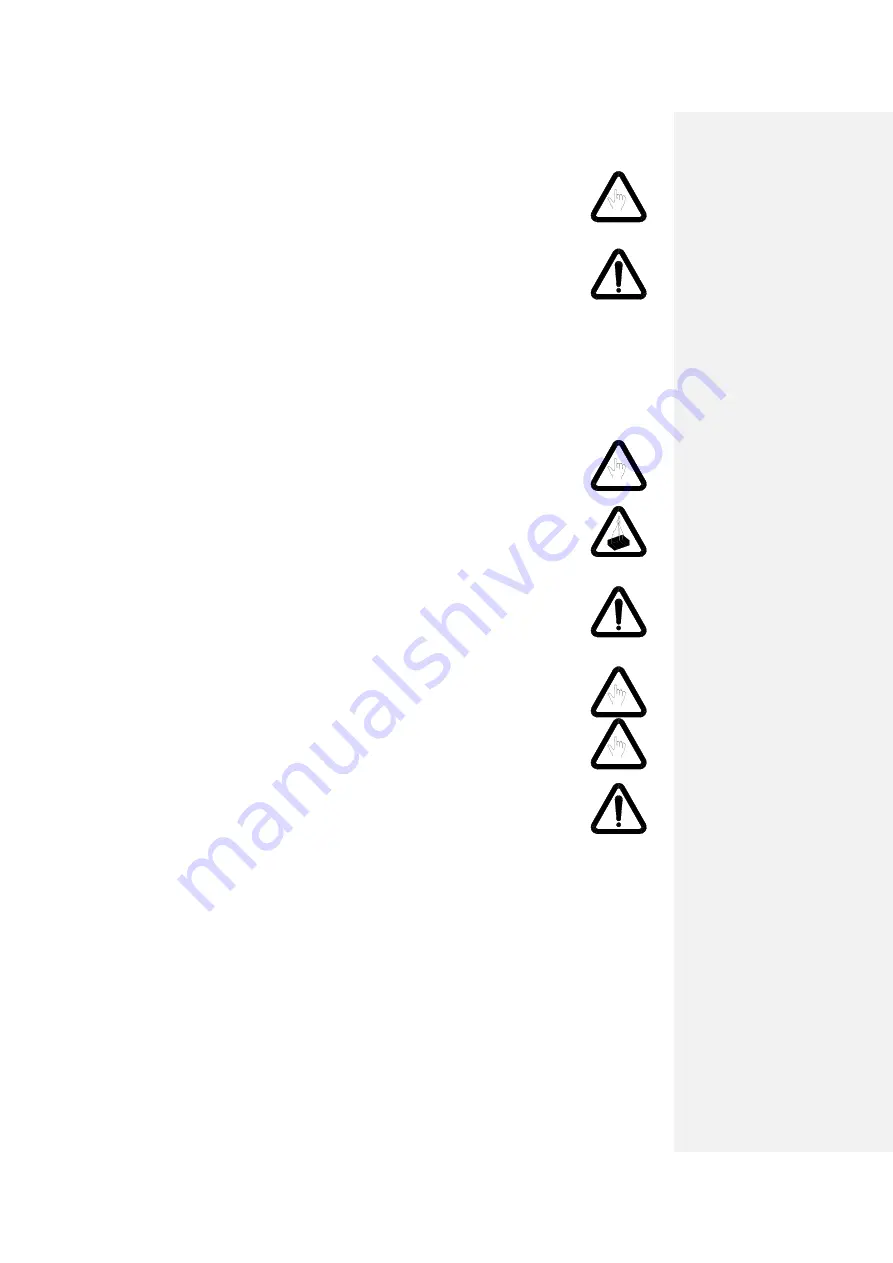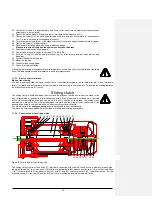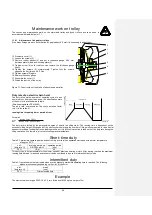
43
Operation
The load may only then be moved if it is slung securely and no person is standing near enough to be
at risk and when the operator has received an all clear signal from the person slinging the load (VBG
8, section 29.1, paragraph 1).
The load must be placed vertically under the electric hoist before lifting.
The motion directions are indicated with symbols on the control buttons.
Do not turn the chain over edges.
Consult the manufacturer or supplier, if the hoist is to be used in aggressive environment (for
instance acid or alkaline or dusty environment or to transport inflammable or other dangerous loads).
Don’t lower the double fall hook if the chain gets slack.
Repairwork has to be done only if mains supply is switched off and no load is suspended on the
hook.
After switching off the emergency stop the reason for this failure has to be found out by trained
people and the hoist can only be used if all possible failures are removed.
Lifting the load from the ground has to be done with the lowest possible speed. Before doing this
slack sling chains or ropes have to be tightened carefully.
Don’t touch the chain near the lifting gear if in operation.
Prohibitions on use
Inching mode
Permanent run against the rubber washers of the lowest and highest hook position or lifting
loads with bigger weight as marked on the specification plate
Transporting people
Using the hoist with people being underneath the load
Starting initial operation before an expert or a trained specialist has inspected the equipment
Moving loads heavier than the nominal load
Pulling loads which are tilted or dragging loads
Tearing off loads
Removing the cover of vessels under vacuum
Carrying out repairs without disconnecting the current supply and without special knowledge
Using the lifting chain to sling the loads
Using the lifting chain longer than that stated under the chain bag (see 3.1.3 and 3.1.3.1)
Using the hoist with higher duty rate as marked on the specification plate
Using the hoist without having done the regular inspection
Maintenance
All maintenance work must be carried out by trained specialists
The maintenance table 1 lists the parts and functions to be tested and the necessary maintenance
work. Defects must be rectified immediately by a trained specialist
Maintenance work may only be carried out if the electric chain hoist is not loaded and the mains is
switched off so that the current supply is disconnected
Shorten the periods between maintenance work in very demanding operating conditions, e.g. multi-
shift operation, high number of switching actuation, poor environmental conditions
Checking for wear
Check suspension hook and load hook for deformation (measure grain spacing) and cracks
The chain sprocket in the hook block must be replaced if the running surface is worn by about 1 mm
Check the load chain (see section 7.4.2)





























